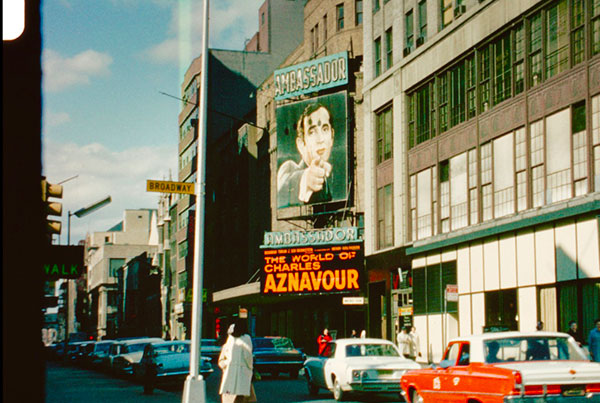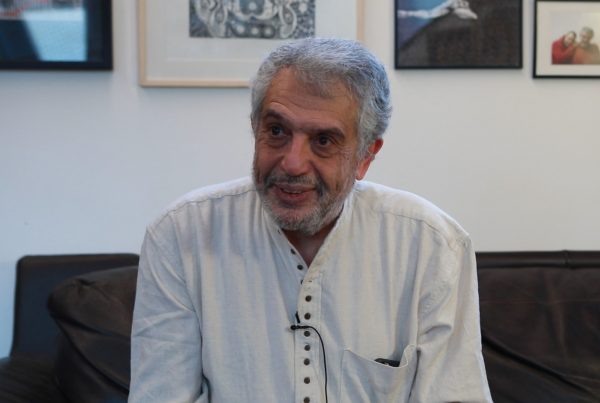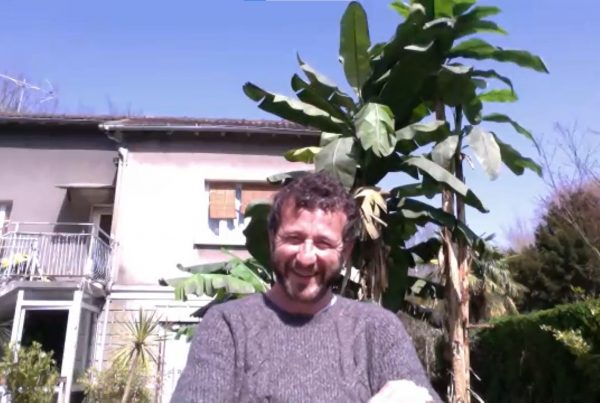Aznavour by Charles – Aznavour Filmmaker
Made with Super 8 images filmed by Charles Aznavour from 1948 to 1982, the peculiar documentary is produced by Mischa Aznavour, son of the singer, and directed by Marc di Domenico who met with us.
Interview by Quentin Moyon
![]() Reading time 6 min.
Reading time 6 min.
Aznavour by Charles begins with a gift from Edith Piaf. In 1948, Charles Aznavour receive from his close friend a Paillarde camera, which he will keep until 1982. It is a time travel, a visual diary about Aznavour’s daily life filmed by Aznavour, taking us along from Canada to Armenia. Love stories, friendships and laughter. You get to meet with a facetious character through what he saw, watched and showed.
Directed by Marc di Domenico (recognized as a musical director for the BB Brunes, Henri Salvador or Emir Kusturica and the No Smoking Orchestra) and narrated by Romain Duris, a collective piece such as the singer’s life and love for cinema.

You get to meet with a facetious character
through what he saw, watched and showed.
How was the project that we get to see on October 2nd born ?
Mischa Aznavour : Everything began with my friendship with Marc di Domenico… We have known each other for 20 years and we already worked together on projects such as Henri Salvador’s album. Then, 5 or 6 years ago, we decided to start our own company because we both had free time. We started to work on projects like my father’s album. That is how my father and Marc met. Which made him show his pictures to Marc. Being very receptive to the photos, my father told him he still had rolls somewhere. That is how it all started. He (Charles) thought it could be useful to us without knowing exactly what que could do with it or even that he would be involved in the early days of the project.
Was the film easy to do then ?
Marc : No it wasn’t because there was not any existing feature films about Charles Aznavour so theaters and producers didn’t know where it was going. Nowadays, neither independent theaters nor independent producers take risks anymore. Unlike Georges de Beauregard’s time for instance, when they went to shoot without knowing what was going to happen. Now this is over. So we were lucky to find a crazy producer : Charles de Meaux (Apitchapong Weerasethakul’s producer and The Lady in the Portrait’s director). He started in contemporary art so he sees pictures differently. When he saw the rushes, he said it could make a feature film. It was risky even if on paper it wasn’t…
Before Aznavour by Charles, you directed a documentary called “Autobiographie”, following the artist daily life for 4 years. Did you want them to be complementary ?
Marc : I actually don’t want anything. It is done because it has to be. While I was editing, I tried to avoid what I already did but to say I was looking for a complementarity…Not at all. It was a new project that had nothing to do with the other one which I totally forgot. The reflection is about the subject and not what is around it.
The movie covers the years between 1948 and 1982. Didn’t he film before or after those years ?
Mischa : No, we simply took the choice to focus on the film roll years. Nevertheless, I don’t think he shot before 1948. In those days, to own a camera…Everybody wasn’t a friend of Piaf and didn’t receive a camera just like that. After 82, video arrived so there is probably more pictures in DV than film. But we made the choice to stick to the film years, to the same core material. We don’t know if we will show the rest later yet… It is not in discussion today.
Why did you choose Romain Duris to narrate the film ?
Mischa : I chose Romain Duris because when I saw The Beat that my Heart Skipped, I felt he had something similar to my father…He doesn’t look like him, but he is refined, a bit nervous. He has in his attitude some mischievousness, sparkling eyes…
Is it hard to work from archives ? To make sense from pictures you didn’t shoot ?
Marc : Yes it is hard… I have never done any archive movies before. I edited for 9 months with various editors. The hard part being to associate various locations, characters and themes to make the film coherent. To link them without being monotone. So it is really unique. You don’t shoot with a scenario. You write from already existing shots. How do you get the images to tell a story without framing or choosing the characters ? So we had to understand what he meant, you interpret the pictures. It is also a dialogue with Charles, a co-direction, hence the formula “By Charles Aznavour directed by Marc di Domenico”.
- Aznavour
- Marc di Domenico
- Documentaire
Voir aussi


